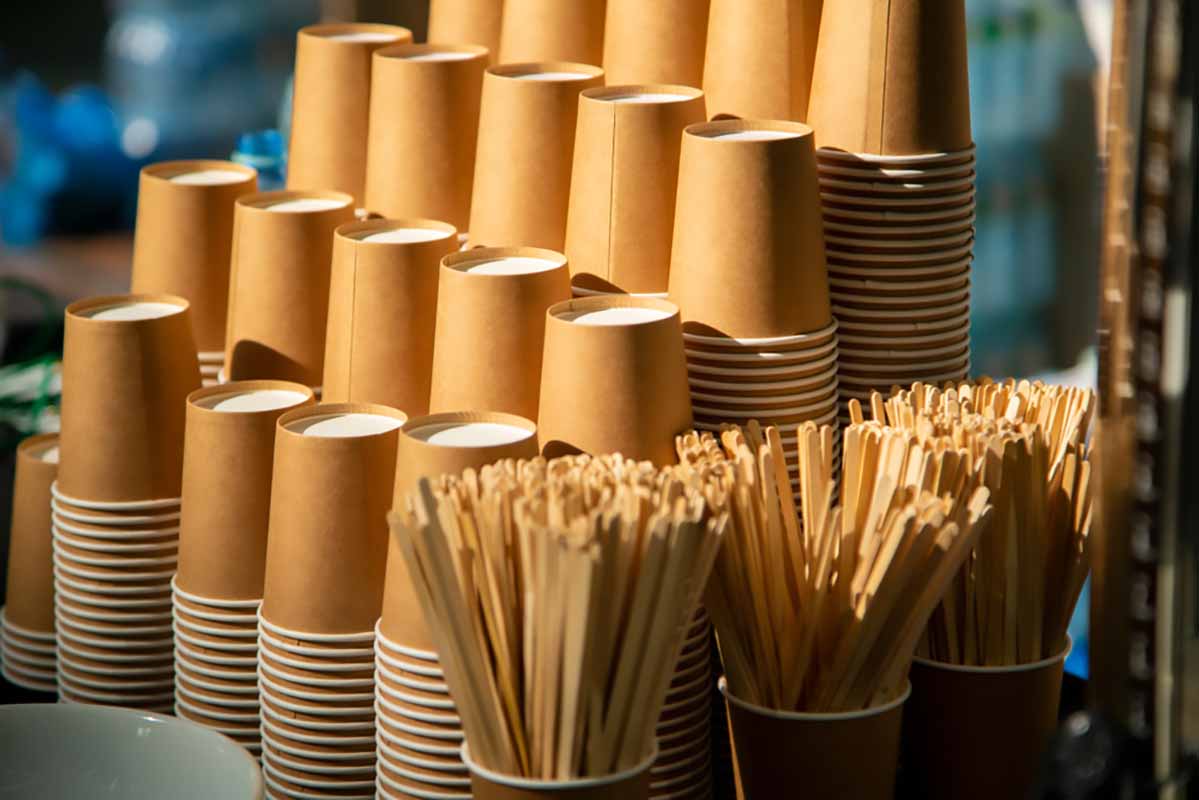
WM will accept PP and paper to-go cups in curbside bins as new sorting lines expand and the company pushes cities and residents to update guidance and clean up cup recovery. | Andy Shell / Shutterstock
While people may not think twice about throwing away a takeout coffee cup, the nation’s biggest hauler is looking to change that behavior by expanding its list of accepted curbside materials.
While people may not think twice about throwing away a takeout coffee cup, the nation’s biggest hauler is looking to change that behavior by expanding its list of accepted curbside materials.
WM added PP and paper to-go cups to its universal list of accepted recyclable materials, and the company aims to have all of its single-stream recycling facilities accepting paper and PP cups by mid-2026.
To prepare, WM has invested $1.4 billion in new recycling infrastructure across North America, adding recycling capacity and capabilities.
“WM’s upgraded state-of-the-art recycling facilities have optical scanners and intelligent sorting equipment,” a WM spokesperson said. “With new, advanced sorting technology in place, we’re now able to handle these cups more efficiently and meet the growing demand for these recycled materials.”
The Recycled Materials Association (ReMA) recently added paper cups to its materials specifications. In Omaha, Nebraska, First Star Recycling started accepting paper cups in local curbside collection earlier this year, and in 2023 hauler LRS expanded its list in Chicago to include paper cups. Ohio’s Rumpke Waste & Recycling added paper cups to its acceptable items list in early 2022 when its new Columbus MRF opened.
Bringing collection curbside
To-go cups have long been a challenge for curbside recycling programs. This is because food-service cups often include coatings, liners or multi-material construction that complicate sorting and processing.
Municipalities have also struggled with inconsistent guidance to residents, as cups were technically recyclable in some regions but not accepted in most curbside programs.
With its new investment, WM noted that its operational capacity and downstream market demand has advanced to where cups can be handled as part of mainstream recycling rather than treated as contamination.
Implications for municipalities
Although WM’s acceptance applies broadly across its system, the rollout is not uniform, it said, as numerous municipalities operate under preexisting contracts or maintain independent materials lists that require revision before cups officially become accepted.
So WM is encouraging local program managers, haulers and city officials to update their guidelines so residents know to place cups into their bins.
As part of the initiative, WM is collaborating with industry leaders like Starbucks, The Recycling Partnership, How2Recycle, the NextGen Consortium managed by Closed Loop Partners’ Center for the Circular Economy and the Foodservice Packaging Institute, as well as municipalities and the National League of Cities to drive awareness and update recycling guidelines of what materials can be accepted in communities through curbside or drop-off programs.
“The program will focus on three pillars – recycling infrastructure that can accept and recycle paper and plastic cups; activating recycling access through WM’s customer base; and educating customers and consumers alike by updating WM’s standard list of acceptable materials,” the spokesperson said.
Boosting diversion efforts
For local recycling managers, adding cups to the curbside list involves important considerations that go beyond simply accepting another material. Now, programs can expect an increase in recoverable material as cups that previously ended up in the trash will start showing up more often in the bin. While that added volume can help boost diversion and may improve reported recycling rates, that will only happen if the material is captured cleanly and efficiently.
Contamination and quality control are therefore important considerations, since liquids left in cups, stray lids and straws or non-accepted cup formats can all undermine bale quality.
That’s why resident education and clear messaging from municipalities and haulers is integral for success. WM is working with key organizations across the recycling ecosystem, including packaging and education groups, to align guidelines and update national messaging so that consumers receive consistent preparation instructions.
“As with all recycling, it’s important for consumers to recycle correctly,” the spokesperson said. “Food residue is problematic regardless of material type, so WM continues to educate consumers about contamination so they can recycle confidently. To help with this national effort, WM updated its standard acceptable items on its Recycle Right rules and related education materials.”
More stories about fiber

